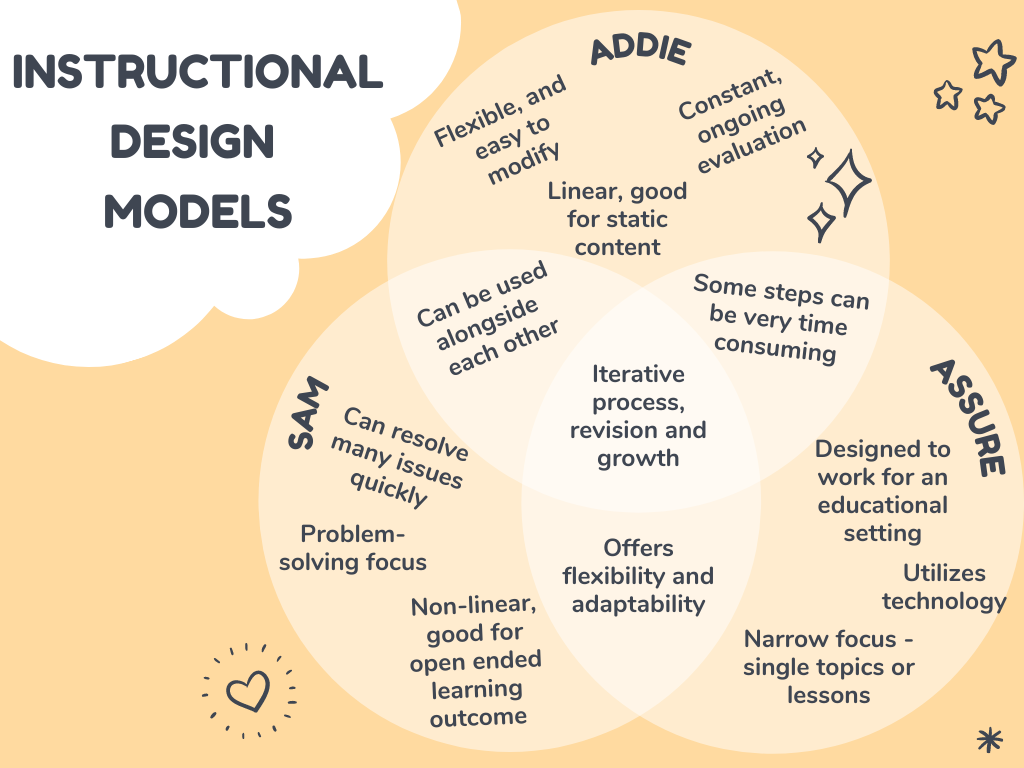Instructional Design Models
While ADDIE is often considered the gold standard for Instructional Design Models, sometimes another approach may better suit the project. Additionally, some models can be used in alignment with others to help meet different needs. These frameworks provide a guide map to the Instructional Design process.
Here are a few links with more information about various Instruction Design Models:
Instructional System Design (ISD): Using the ADDIE Model S. McGriff, Penn State University, September 2000
The ADDIE Model Infographic eLearning Industry, August 2017
SAM - Successive Approximation Model, J. Thomas, September 2015
ASSURE Instructional Design Model Educational Technology, November 2015
A 4D Model for Training Success - Training (trainingmag.com) Training Magazine, 2016
The image below compares the ADDIE, ASSURE, and SAM models. Each approach has strengths and weaknesses, but all can help to create more equitable learning experiences. The Analysis step of ADDIE, Assess Learners step of ASSURE, and the Background phase of SAM all give Instructional Designers an opportunity to start off a new project by thinking about who their learners are. Putting this step first and foremost, as opposed to an afterthought or later adaptations, allows for an equity lens to be consistent throughout a learning experience. Equitable instruction and design benefits ALL learners, and maintaining that lens throughout a career as an Instructional Design will benefit your work and learner experience.

